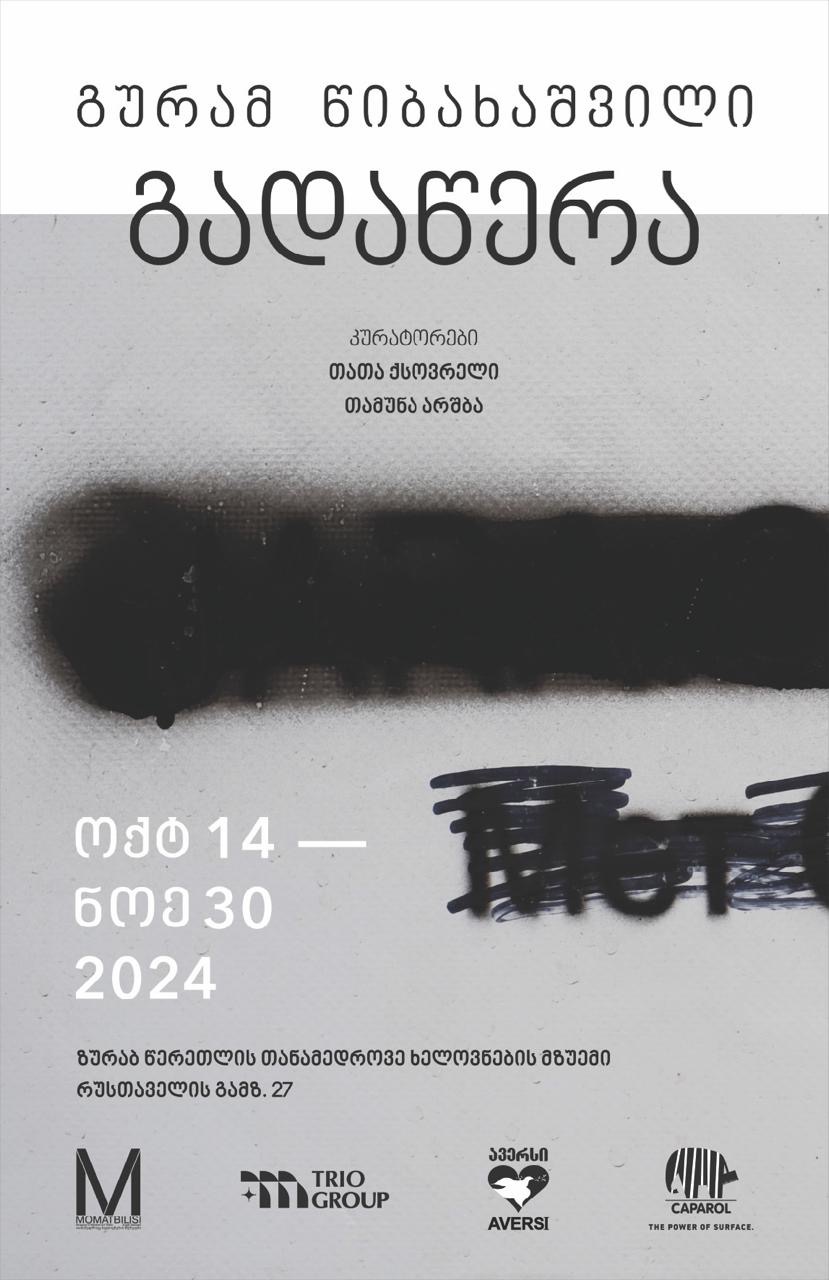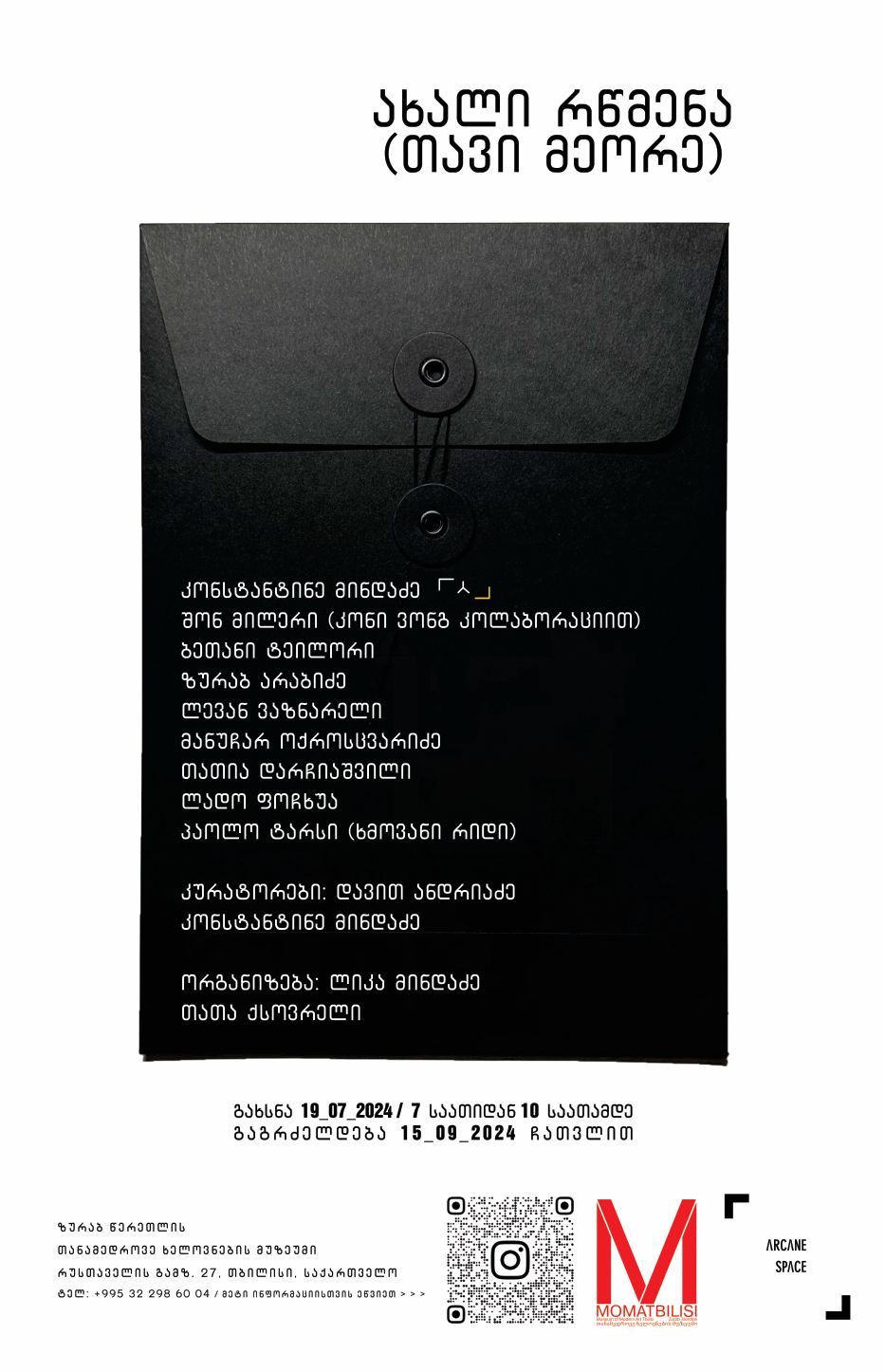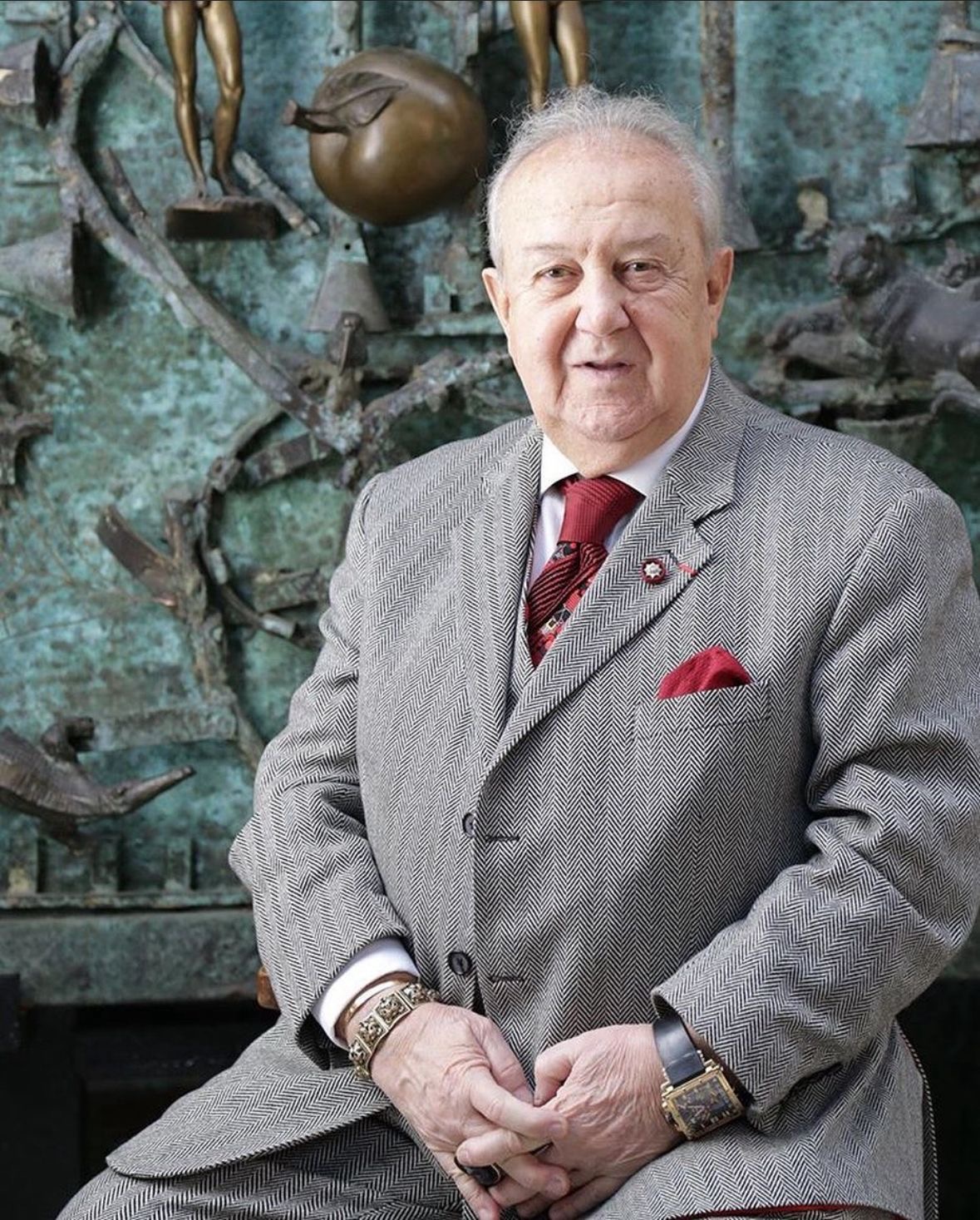
Guram Tsibakashvili-REWRITE
Guram Tsibakashvili is one of the outstanding artists of Georgia’s artistic space. He is best known for his photography, which reflects the ontological research of the transitional phases of contemporary Georgian history, the current processes of evaluating cultural codes, changing values, and political activism. In addition to photography, the artist creates conceptual objects, paintings and collages.
The works presented at the exhibition combine different series and mediums. Among them, the new series of graphic works, reflecting research on the interpretation of transformative events in time and space. The word “transformative” stands as a cornerstone, considering the forms of time. Biological time consists of statistically determined durations, from birth to death; historical time is variable, and the intervals between actions are constantly changing. The beginning and end of an action are objectively and conditionally violated, while the actions between them are the determining factors of historical time. The formation of historical time creates actual events in the present, and then the definition of actuality falls into the centre of the chronicler’s research. George Kubler, in his study “Forms of Time,” defines actuality as: “the darkness between the lights of the lighthouse, the instant between the ticks of the watch, the rupture between past and future, the gap at the poles of the revolving magnetic field, a void interval slipping forever through time.” Actuality always slips out of our hands, because in the present, the speed of perception is limited as well as the speed of its spread, only from the future the actuality is perceived and reconsidered.
The works presented at the exhibition serve as more than mere documentaries; they encapsulate the complex emotional and historical landscape of Georgia from the 1980s. Tsibakhashvili’s art delves into the “interval void” that exists between past events and their present implications. the void, where an explosion that is inaccessible to our eyes occurs in the present, and then the projection that comes in the form of light signals becomes an actual reality.
The works presented at the exhibition combine different series and mediums. Among them, the new series of graphic works, reflecting research on the interpretation of transformative events in time and space. The word “transformative” stands as a cornerstone, considering the forms of time. Biological time consists of statistically determined durations, from birth to death; historical time is variable, and the intervals between actions are constantly changing. The beginning and end of an action are objectively and conditionally violated, while the actions between them are the determining factors of historical time. The formation of historical time creates actual events in the present, and then the definition of actuality falls into the centre of the chronicler’s research. George Kubler, in his study “Forms of Time,” defines actuality as: “the darkness between the lights of the lighthouse, the instant between the ticks of the watch, the rupture between past and future, the gap at the poles of the revolving magnetic field, a void interval slipping forever through time.” Actuality always slips out of our hands, because in the present, the speed of perception is limited as well as the speed of its spread, only from the future the actuality is perceived and reconsidered.
The works presented at the exhibition serve as more than mere documentaries; they encapsulate the complex emotional and historical landscape of Georgia from the 1980s. Tsibakhashvili’s art delves into the “interval void” that exists between past events and their present implications. the void, where an explosion that is inaccessible to our eyes occurs in the present, and then the projection that comes in the form of light signals becomes an actual reality.
CURATED BY TATA KSOVRELI,
TAMUNA ARSHBA
TAMUNA ARSHBA

Poets, Masks, Actors, Ghosts
30
April
April

NEW FAITH (CHAPTER II)
14
July
July




